The constellation of Ursa Minor is one of the 48 constellations listed in the second century by Ptolemy, a Greek mathematician and astronomer.
Key Facts & Summary
- Ursa Minor is one of the 88 modern constellations recognized by the International Astronomical Union and one of the 48 constellations discovered by Ptolemy in the second century AD.
- The constellation of Ursa Minor is usually associated with two legends: the legend of Zeus and the legend of Callisto, a greek nymph.
- Ursa Major is the 56th largest constellation in the sky, covering up to 256 square degrees.
- Its brightest and most important star is Polaris, with a visual magnitude of 1.98.
- Polaris is a significant star. It is the north star, used in navigation since ancient times.
- Polaris is actually more accurate than a compass when it comes to showing the true north.
- Ursa Minor is visible throughout the year in the northern hemisphere.
- Seven of its stars forms the Little Dipper asterism – these stars are Polaris, Yildun, Epsilon Ursae Minoris, Anwar al Farkadain, Akhfa al Farkadain, Pherkad, and Kochab.
- Ursa Minor is associated with only one meteor shower throughout the year, namely the Ursids.
- No Messier objects are present within this constellation.
- If you want to find the north star, Polaris, you can use the two bright stars, Dubhe and Merak, from the Big Dipper asterism as a guide.
- Only four stars in the constellation of Ursa Minor host planets. There may be many more though.
- Kochab, one of the Little Dipper stars, was once the north pole star, just like Polaris.
- An ancient Greek philosopher, Thales of Miletus, is believed to be the creator of the constellation of Ursa Minor.
The Constellation of Ursa Minor for Kids
The constellation of Ursa Minor is a very important constellation in the night sky since it hosts the famous asterism known as the Little Dipper and also the current north pole star, Polaris.
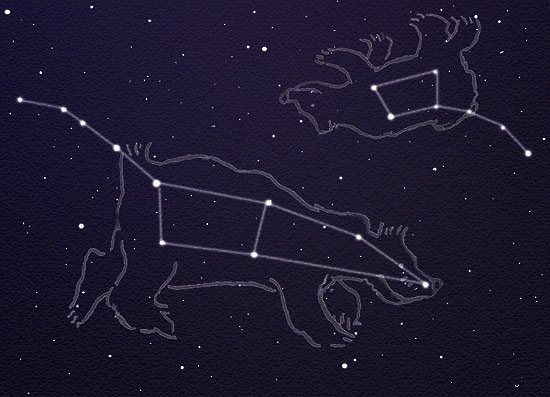
Many stars that form the Little Dipper asterism are former north pole stars, but some will again be north stars. Let's see what the constellation of Ursa Minor is all about!
What is the Constellation of Ursa Minor?
The constellation of Ursa Minor is one of the 48 constellations listed by Claudius Ptolemy, an important Greek astronomer, and mathematician. Nowadays, it is part of the 88 constellations recognized by the International Astronomical Union (IAU).
Ursa Major is one of the oldest constellations in the sky. Its earliest mention dates back to the twelfth century BC. In the Babylonian star catalogs, written on stones and cylinder seals, the Ursa Major constellation has been recorded under the name "MUL.MAR.GÍD.DA.AN.NA."
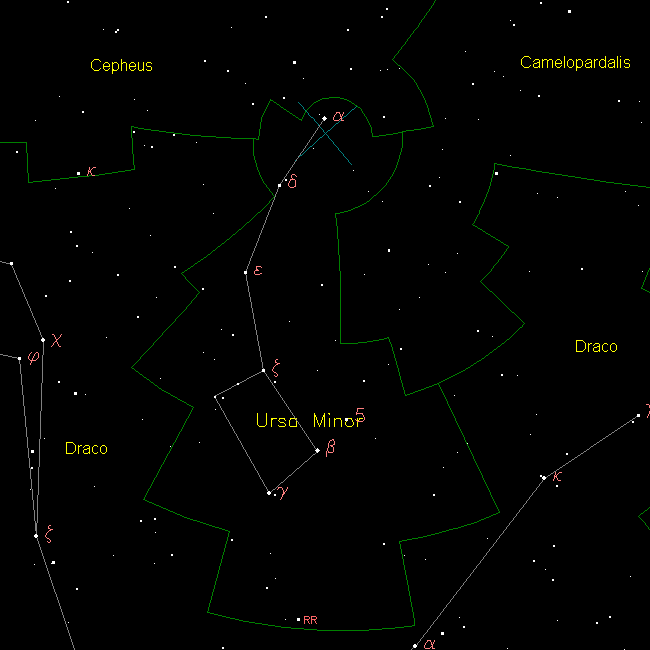
This translates as "Wagon of Heaven," and it is associated with the Goddess Damkina. The constellation of Ursa Major was also listed in the MUL.APIN catalog somewhere around 1000 BC. The constellation was mentioned along with the "Stars of Enil," which represents the northern sky.
What is the Story behind the Constellation of Ursa Minor?
There are many legends and stories regarding the constellation of Ursa Major. In one of them, the constellation represents Ida, the nymph who took care of Zeus during childhood.
The story begins with Cronus, who, led by an old prophecy, swallowed all of his children for fear of not being overthrown. When Zeus was born, his mother, Rhea, managed to save his life by tricking Cronus into swallowing a stone instead of the baby.
She then decided to hide Zeus on Crete's island, where Ida and Adrasteia raised him. Years later, Zeus fulfilled the prophecy and became the king of Gods. He eventually freed his sisters Hestia, Hera, and Demeter and his brothers, Hades and Poseidon. As a sign of gratitude, he turned Ida into Ursa Minor and Adrasteia into Ursa Major.
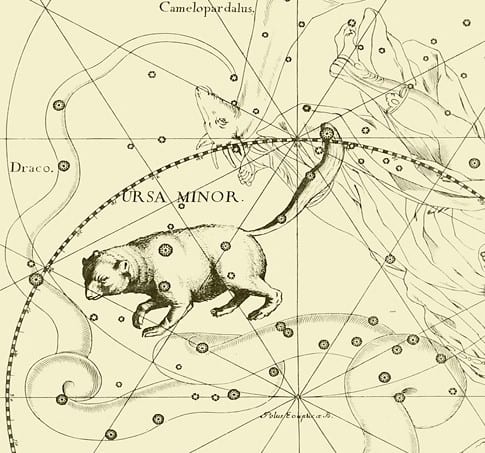
In another story, according to Greek mythology, Zeus, the king of gods, fell in love with Calisto, a nymph who had sworn a vow of chastity to Artemis. Even though their love was forbidden, a child was born under the name of Arcas. Soon after, Hera, Zeus' wife, found out about her husband's infidelity, and out of jealousy, she turns the beautiful Callisto into a bear, hoping that Zeus will no longer love her.
Callisto spends the next 15 years wandering through the woods and hiding from hunters. But one day, she encounters her son, Arcas, and as he doesn't recognize her, he draws his spear and attempts to attack her.
When Zeus sees what is about to happen, he sends a whirlwind to avert the upcoming tragedy. He carries both Callisto and Arcas into the sky. There, he turns his son into the constellation of Ursa Minor and his lover, Callisto, into Ursa Major.
Why is Ursa Minor Important?
Ursa Minor is a significant constellation because it contains Polaris, a star that has been used in navigation for centuries, especially by mariners. Polaris is the current north pole star. However, many stars that make up the Little Dipper asterism are former north pole stars.
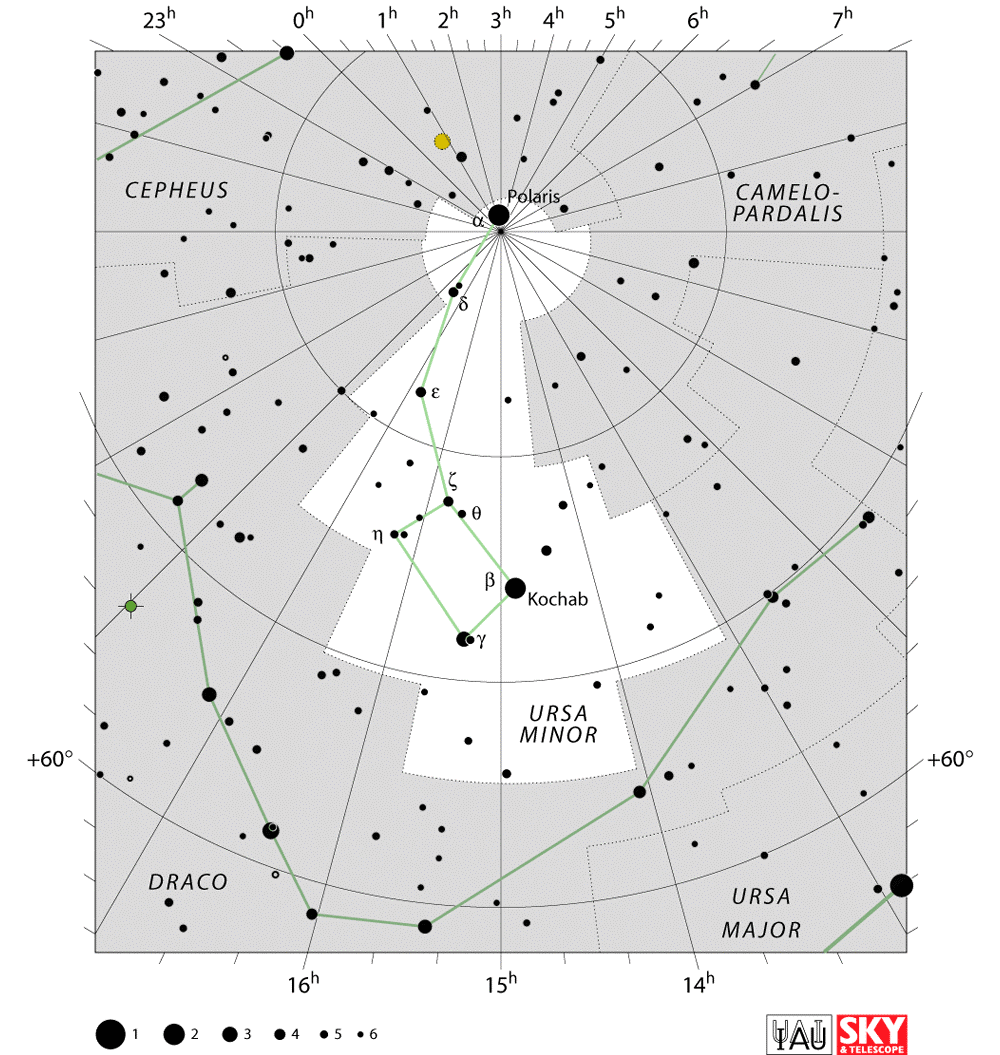
Fun Kids Facts About Ursa Minor
- Ursa Minor is Latin for "Lesser Bear," and it is also known as the Little Bear constellation.
- The stars Kochab and Pherkad are known as the Guardians of the Pole because they rotate around the North Star.
- Because the Earth axis is not fixed but strongly influenced by the Sun and the Moon's gravitational attraction, Polaris will not be at the North Pole forever. In approximately 14.000 years, it will change positions with Vega, and after another 14.000 years, Polaris will be at the North Pole again.
- Ursa Minor hosts only one meteor shower throughout the year, and this is the Ursids.
Size and Comparison
Ursa Major is a small constellation, ranking 56th out of 88 recognized constellations. It covers up to 256 square degrees, and it can be spotted at latitudes between +90o and -10o. Even though it is not a prominent constellation, it can be easily recognized once you find the Little Dipper.
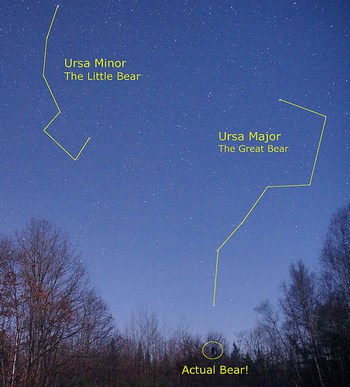
Trivia
Ursa Minor vs Ursa Major
Ursa Minor, the Little Bear, and Ursa Major, the Great Bear, are two distinct constellations located in the northern hemisphere. They both shared the same legend throughout history and also the same importance in navigation.
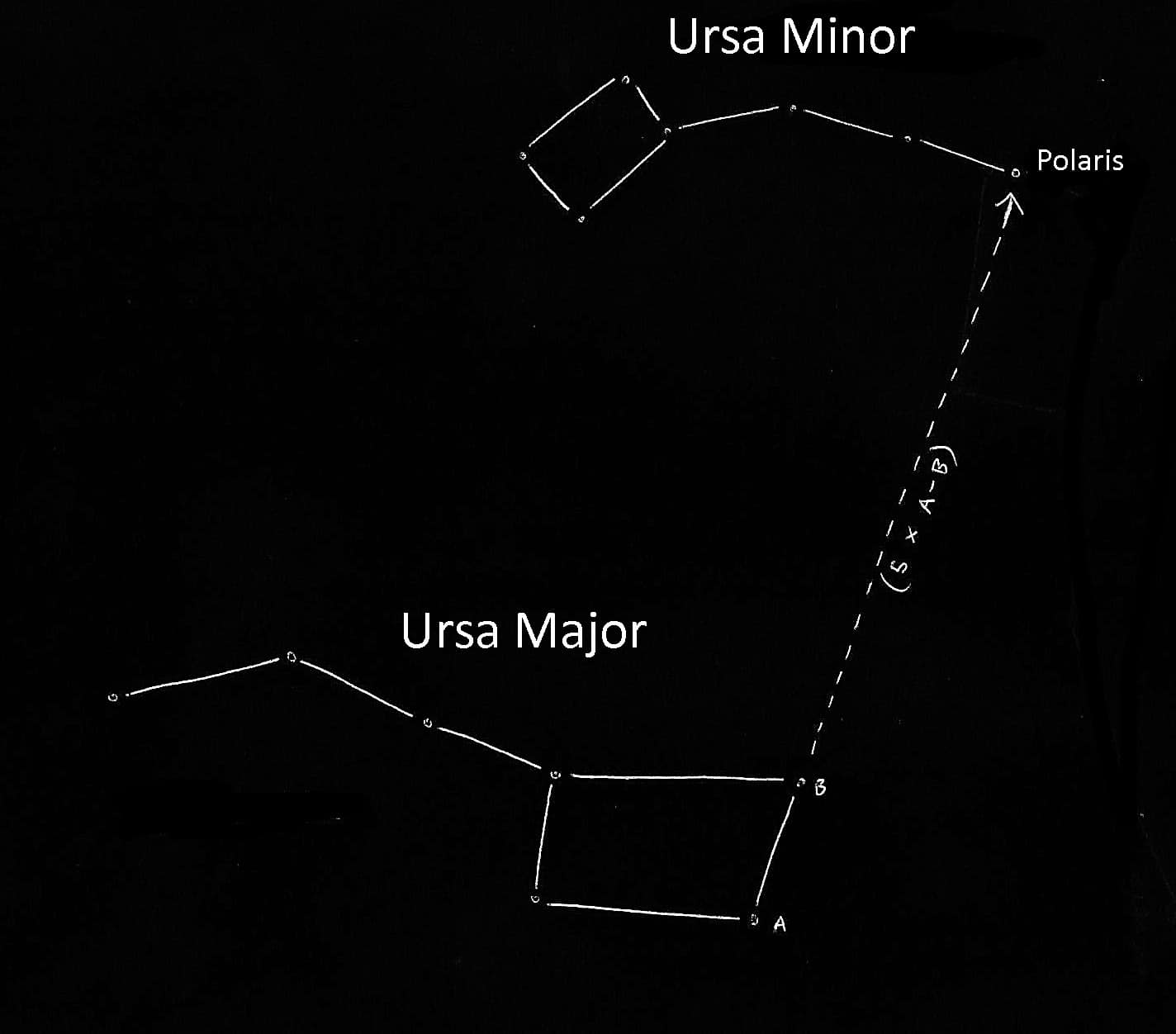
What Are the Main Stars of Ursa Minor?
The brightest stars in Ursa Major that form the Little Dipper are as follows: Polaris, Kocab, Pherkad, Epsilon Ursae Minoris, Akhfa al Farkadain, Yildun, and Anwar al Farkadain.
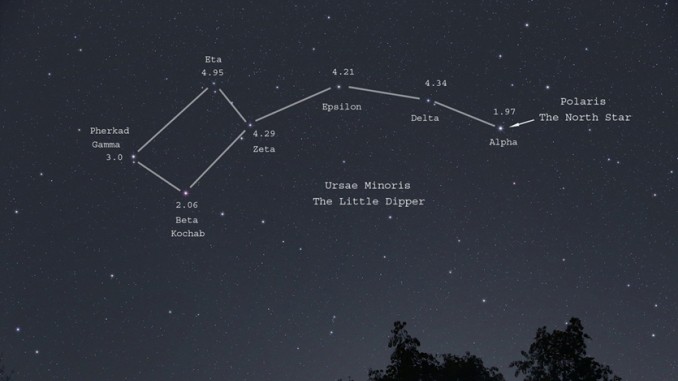
Polaris, or the North Star, is a yellow supergiant located at 433 light-years away from Earth. It is the brightest star of this constellation and the 50th among the brightest stars in the night sky. It has a visual magnitude of 1.98, and it is 2,900 times more luminous than our Sun.
Kochab is the second brightest star in the constellation of Ursa Minor, and it has a magnitude of 2.08, being 390 times brighter than our Sun.
What is the Little Dipper?
The Little Dipper is an asterism that belongs to the constellation of Ursa Major. It consists of seven stars, the most important one being Polaris, also known as the North Star.
What is the Little Dipper Used For?
The Little Dipper is mainly used by sailors as its main star; Polaris indicates the north as the nearest bright star to the pole.
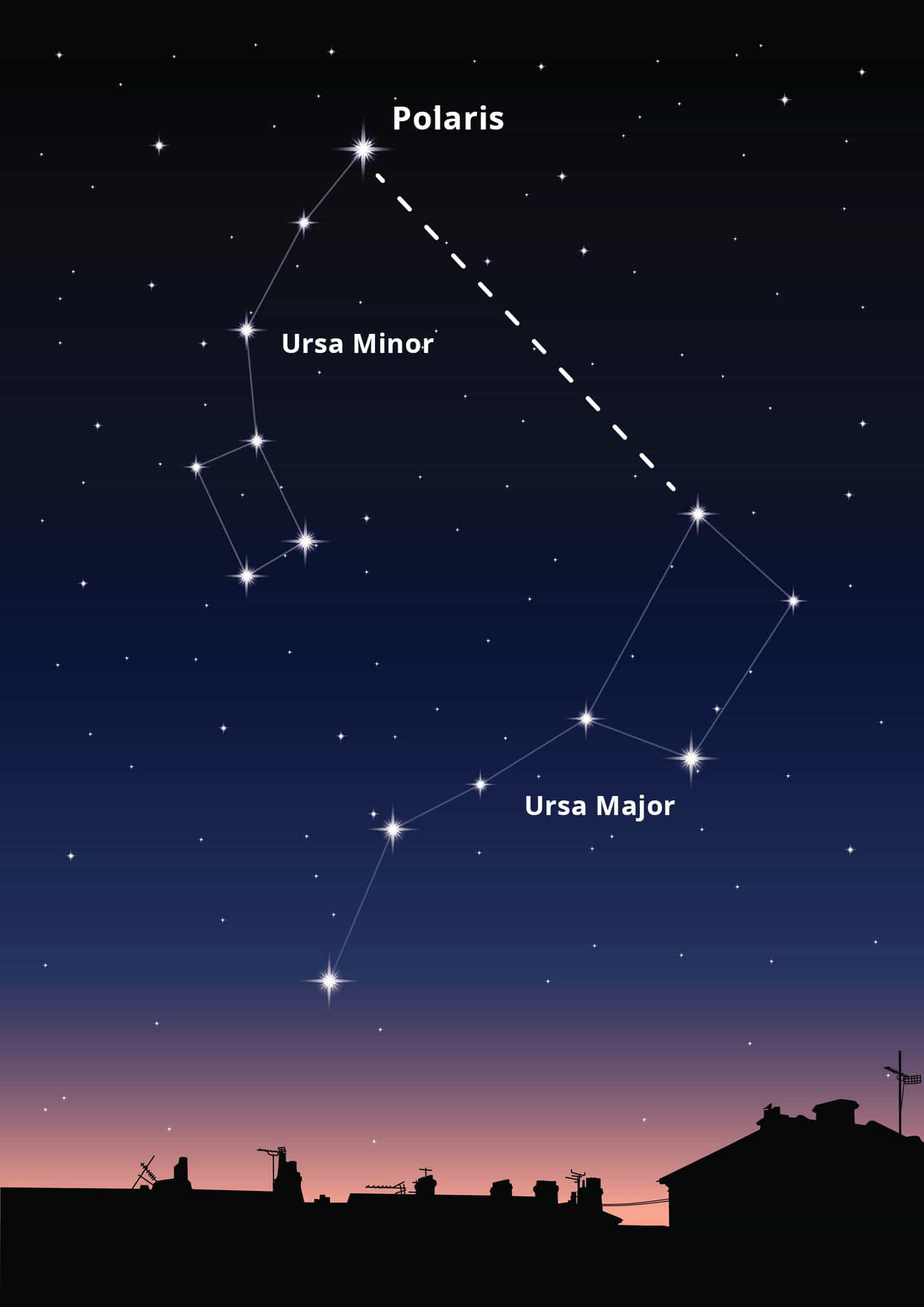
The North Star can also be used to find your latitude on Earth: if you are near the equator, Polaris will be near the horizon, but if you are at the North Pole, the star will be right above you.
What Does the Big Dipper Do?
The Big Dipper is an asterism that belongs to the constellation of Ursa Major. It is mainly used as a navigation tool because it serves as a pointer to other sky locations. For example, if you draw a straight line up, continuing the imaginary line between Merak and Dubhe, you will reach the North Star.
Similarly, if you continue the Dipper's handle, you will find the bright star Arcturus, and if you keep going, you will discover Spica, one of the brightest stars in the sky and the most shining stars in the constellation of Virgo.
Other Characteristics of Ursa Minor
The constellation of Ursa Minor is placed in the third quadrant of the northern hemisphere (NQ3), and it is visible for most of the year everywhere around the Globe. Although it is best viewed at 21:00 (9 p.m.) during June.
Ursa Minor Notes
- The constellation of Ursa Minor is the 56th largest constellation in the sky.
- Seven of its stars form the Little Dipper Asterism.
- It is visible throughout the year in most of the northern hemisphere.
- Its most important star is Polaris, also known as the current North Star.
- Most of the former north pole stars are located in the constellation of Ursa Minor.
- Polaris, Yildun, Epsilon Ursae Minoris, Anwar al Farkadain, Akhfa al Farkadain, Pherkad, and Kochab, make up the Little Dipper asterism.
- There are no Messier objects located in the constellation of Ursa Minor.
Sources:
Image Sources:
- https://nineplanets.org/wp-content/uploads/2020/07/Ursa-Major-and-Ursa-Minor.jpg
- https://www.universetoday.com/wp-content/uploads/2009/01/ursaminor.png
- https://www.constellationsofwords.com/images/UrsaMinor.jpg
- https://www.constellation-guide.com/wp-content/uploads/2012/08/Ursa-Minor-constellation-map.gif
- https://study.com/cimages/multimages/16/f46dc9ea-2fb9-4299-834f-02ca8e836fbb_bears.jpg
- https://www.woodland-ways.co.uk/blog/wp-content/uploads/2014/01/Diagram-2.jpg
- https://www.astronomytrek.com/wp-content/uploads/2015/10/UrsaMinor-john-chumack-galacticimages-dot-com.jpg
- https://www.farmersalmanac.com/wp-content/uploads/2017/06/Polaris-Star-Graphic-i466605914_1457x2061.jpg
